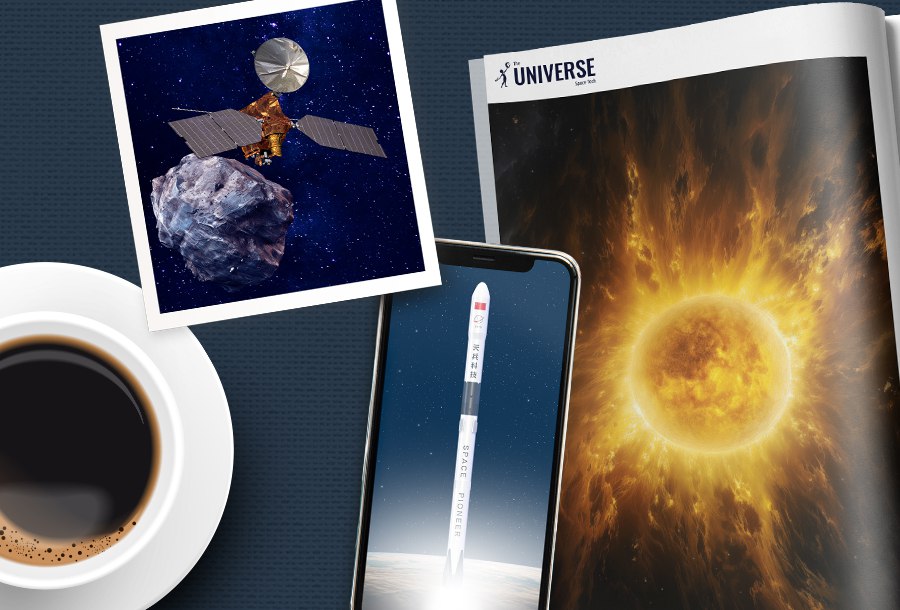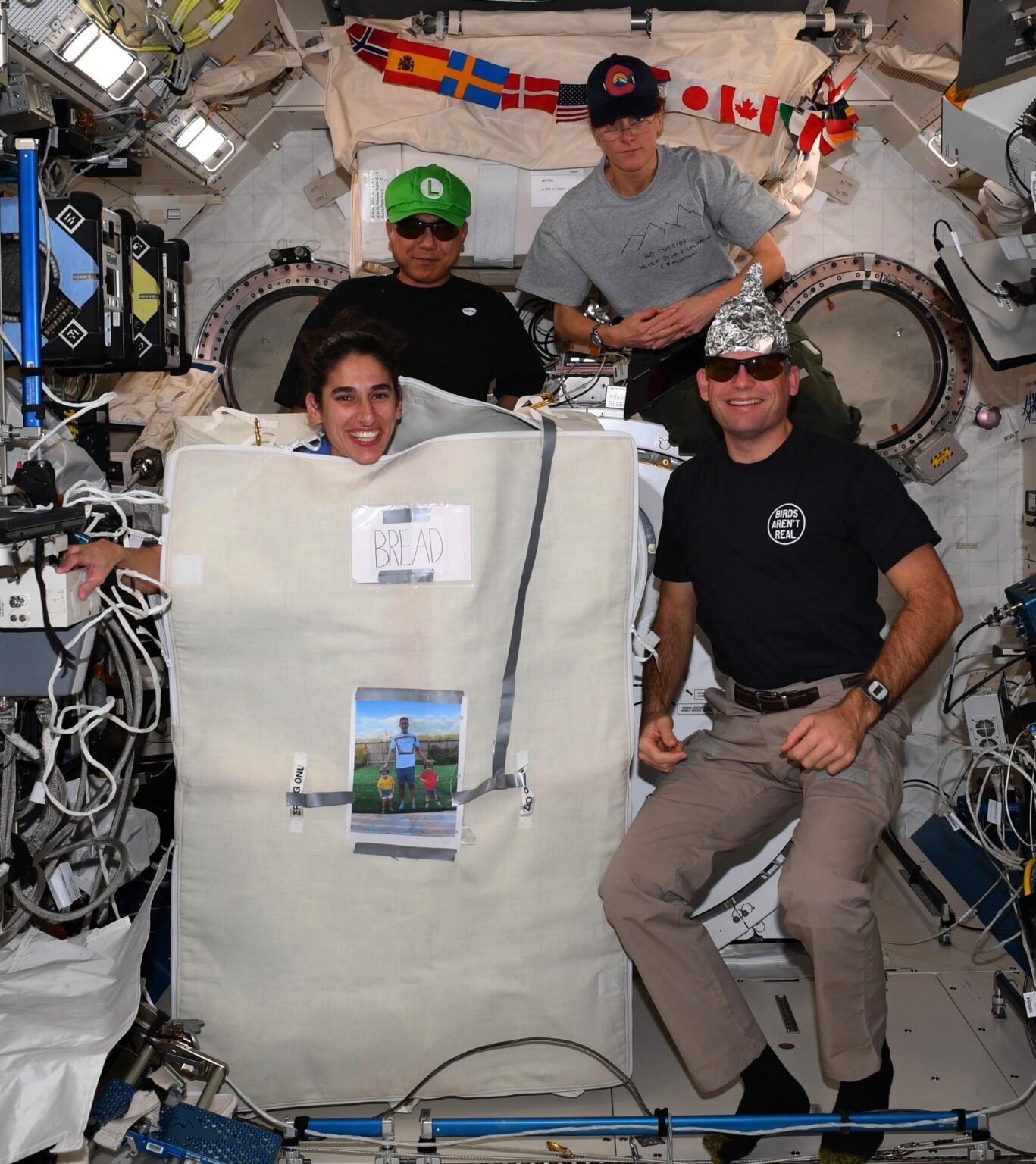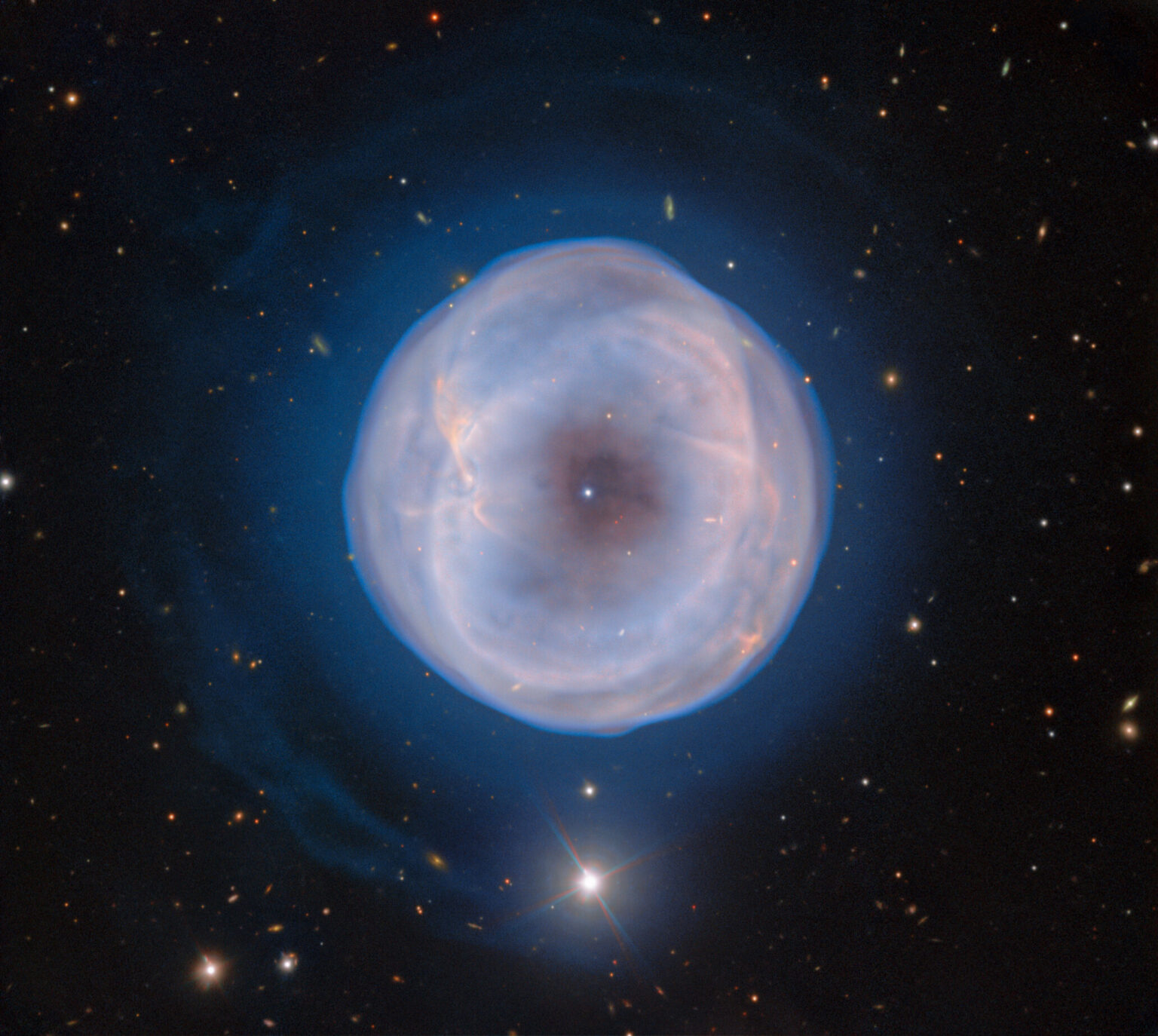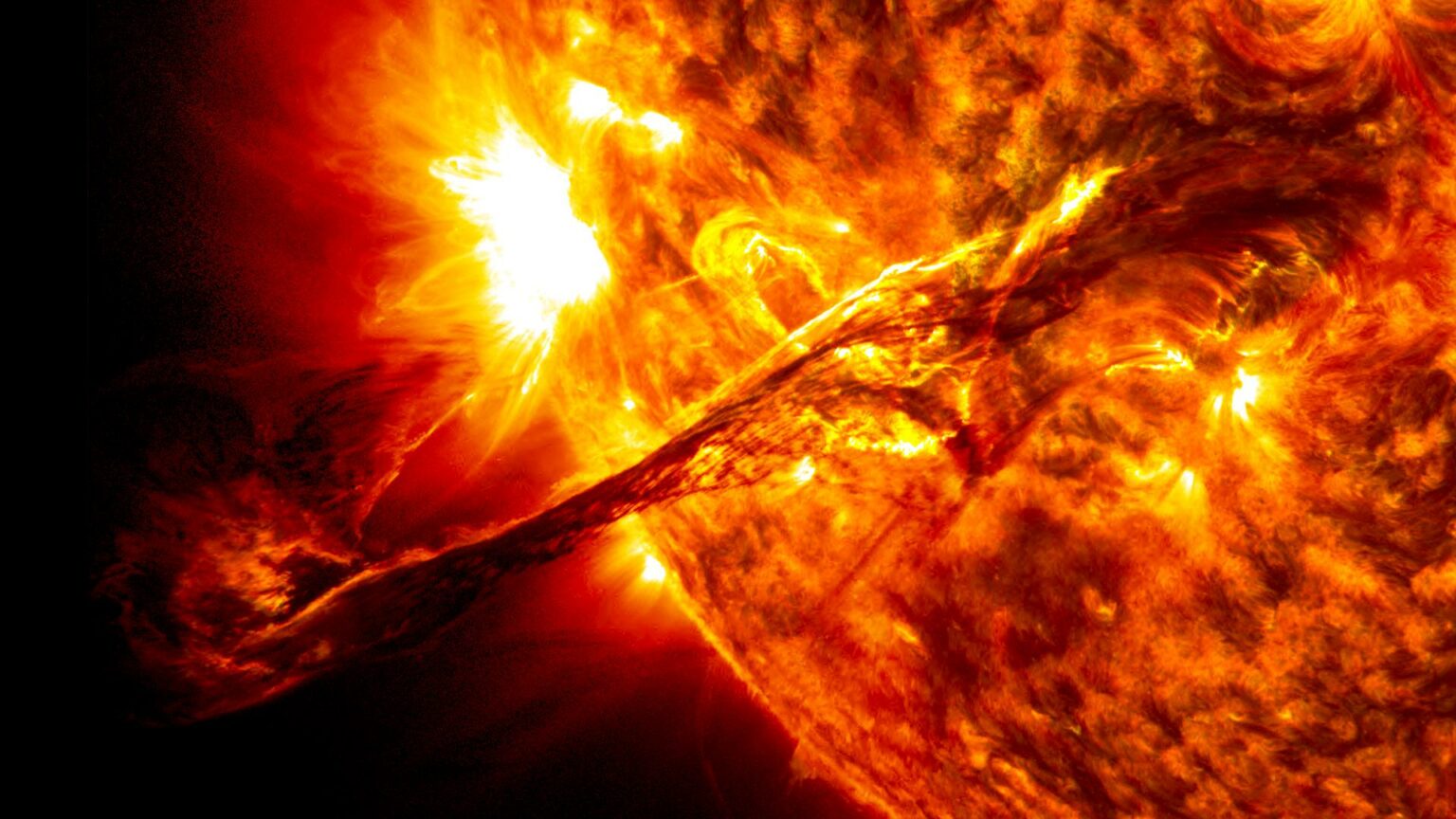Selection of the most interesting space news for the week: Falcon 9 may have a Chinese copy; astronauts created unique Halloween costumes in orbit, and we talk about the most dangerous phenomena in the Universe.

“A foolish faith in authority is the worst enemy of truth.”
― Albert Einstein
Two asteroids for the price of one: NASA tells about the amazing discovery of the Lucy probe
The Dinkinesh asteroid, which the Lucy spacecraft made a close flyby of, turned out to be a binary one. This is evidenced by the images transmitted to Earth. The flight of Dinkinesh took place on November 1. The Lucy probe passed from it at a distance of 430 km. Before this event, there was not much known about the asteroid. Astronomers knew its orbital characteristics, approximate size, and that it mainly consisted of silicates.
Mission specialists suspected that, in fact, Dinkinesh could be the binary object. This was indicated by noticeable fluctuations in its brightness. The images taken during the flight confirmed this assumption. Dinkinesh actually turned out to be the binary asteroid. The size of one of them is 790 m, the second is 220 m.
China’s Space Pioneer company builds a “copy” of the Falcon 9
China’s Space Pioneer company, also known as Beijing Tianbing Technology Co., Ltd, has announced the closure of a successful funding round of approximately “several hundred million yuan” (about USD 13.7 million). Funding is needed for a startup to develop a new reusable Tianlong-3 rocket, which is very similar to the SpaceX Falcon 9 both externally and in terms of technical characteristics.
Tianlong-3 (from Chinese: Sky Dragon-3) is a two-stage liquid-fuel rocket with a reusable first stage. Its height is 71 m, diameter — 3.8 m, starting weight — 590 tons, maximum thrust — 770 tons. Space Pioneer claims that it will be able to launch 17 tons of payload into a 500-kilometer sun-synchronous near-Earth orbit. Now, Space Pioneer is actively building a launch pad for a rocket at China’s Jiuquan spaceport in the Gobi Desert. The first launch of Tianlong-3 is scheduled for the first half of 2024. The startup plans to carry out about 30 launches per year for three years after the debut launch.
Halloween 2023: How astronauts celebrated a good tradition on the ISS

The productive work of the ISS crew is also interrupted for the holidays. This year, astronauts took part in the celebration of Halloween and decorated their spacesuits with special costumes in trick-or-treating style. This time, each crew member chose their own style. Jasmin Moghbeli dressed in a suit in the shape of a box with the inscription “bread”, on which she posted a photo of herself with her daughters. Satoshi Furukawa from the Japan Aerospace Exploration Agency (JAXA) chose a suit with a hat of Luigi, one of the heroes of the Super Mario video games from Nintendo.
Loral O’Hara from NASA chose a Colorado-themed hat with mountains and the inscription “Go Outside: Never Stop Exploring.” This inscription may be connected with her planned spacewalk, and the connection with Colorado is due to the astronaut’s childhood, which she spent in the mountains of this state.
Finally, the author of the photo, Andreas Mogensen put on a foil hat and a T-shirt with the inscription Birds aren’t real. They are associated with an alien invasion and conspiracy theories that are quite popular among the younger generation; the astronaut makes fun of them with his outfit.
A canyon of fire formed in the Sun
The coronal mass ejection formed a giant canyon of fire 10 thousand kilometers wide in the Sun. But this would not affect the Earth because the plasma of the star did not fly towards our planet. On Tuesday, October 31, there was another flare in the Sun. The magnetic filament reconnected, and a powerful detonation occurred. As in many similar cases, it was accompanied by a coronal mass ejection. Simply put, a piece of the Sun broke off and flew away.
It was not the first time, but the scientists could properly see one of the details of this process — the formation of a canyon of fire on the surface of the Sun. At first glance, the plasma that flew into space was a tiny part of our luminary. In fact, the scale of the void that had formed for a time was simply gigantic. This is more than the length of the United States from east to west. In length, it was at least ten times larger. The whole process of its formation is well recorded on video.
Peregrine Lunar Lander arrived at Cape Canaveral
The Peregrine spacecraft created by Astrobotic was successfully transported to Cape Canaveral. In the coming weeks, experts will prepare it for the upcoming flight to the Moon. Its height is 1.9 m, width — 2.5 m, weight (including fuel) — 1280 kg. It is equipped with five engines designed to perform maneuvers in interplanetary space and make a soft landing on the lunar surface. The spacecraft has many ports to put various scientific equipment. In total, Peregrine can carry a payload weighing up to 265 kg.
According to the manifest, 21 payloads will be placed on board the Peregrine. Six of them are provided by NASA. These are several spectrometers, a lidar and a laser reflectometer. The rest of the payloads are provided by various private customers. They include various instruments, a micro-rover, and several souvenirs, including a memorial plaque and a coin on which one bitcoin is “loaded”.
Photo of the week: Spare Tyre Nebula

The NOIRLab Research Center published a very spectacular image obtained by the Gemini South telescope. It shows the IC 5148 nebula, also known by the unofficial nickname Spare Tyre.
IC 5148 is located at a distance of about 3 thousand light-years from Earth in the direction of the constellation Grus. It is a planetary nebula — a gas cloud, inside which there is a stellar remnant. IC 5148 is one of the most rapidly expanding planetary nebulae. It increases at a speed of 50 km/s.
Interesting figure — 200, 000 photos
Jason Kurt had to purchase a very expensive and powerful computer to process such a large amount of data to create this 8K video. The photographer went to the southeast of Utah with 200-kilogram equipment, where he took more than 200 thousand photographs.
For this project, Kurt had to process more than 4 TB of data and use a new 24-core workstation with 192 gigabytes of RAM. He noted that this level of detail for an annular solar eclipse was achieved for the first time. Kurt used a special hydrogen alpha solar telescope and a monochrome camera, which allowed him to capture the solar chromosphere with high resolution. The monochrome camera increased the sensitivity to light, but the colors were then added artificially during processing.
Something to read on the weekend

During Halloween, it is customary to scare each other with scary stories, usually associated with something otherworldly. However, it is enough just to look at the sky. Outer space is a very dangerous place, where a traveler in a spaceship can expect objects that can instantly destroy it. Some of them can even threaten planets. Our edition tells about the most dangerous objects and phenomena in the Universe.
When we talk about “space technology,” we usually mean state-of-the-art devices of exorbitant cost. But this is not entirely true. Many gadgets that have long been commonplace for us were born thanks to the achievements of the space age. Nikita Litvinov tells you about five innovations that have long been part of our everyday lives and for which we should thank NASA.
Follow us on Twitter to get the most interesting space news in time
https://twitter.com/ust_magazine
